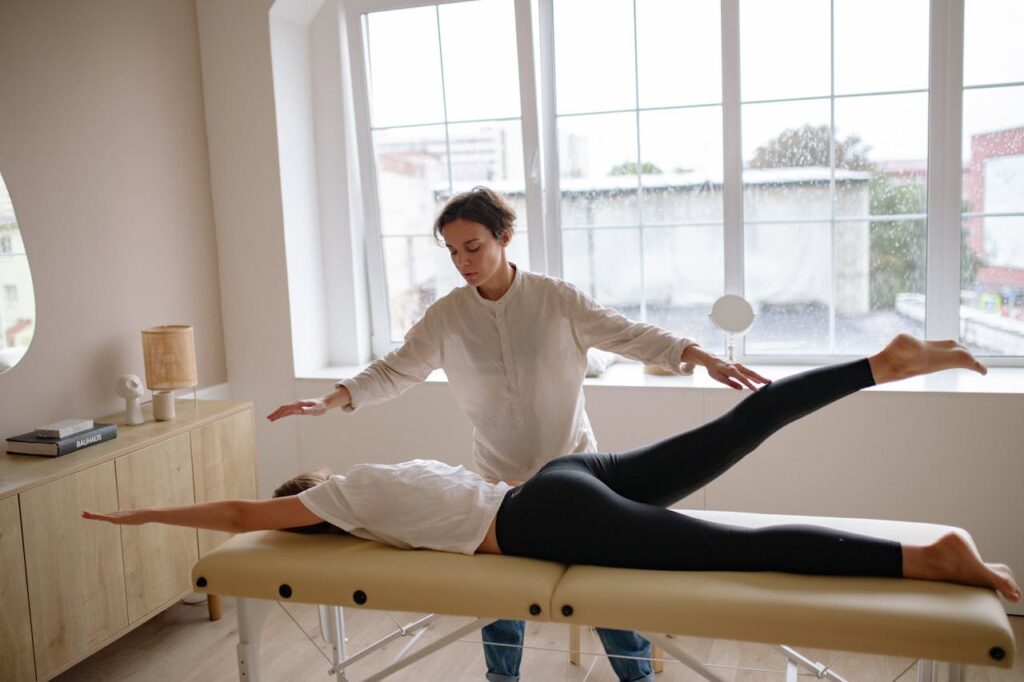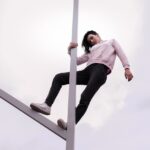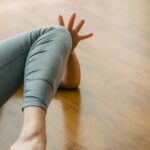Passive range of motion (PROM) is a fundamental component of rehabilitation and physical therapy that plays a crucial role in maintaining joint health and preventing complications from immobility. Whether you’re a caregiver, healthcare professional, or someone recovering from an injury, understanding passive range of motion exercises can significantly impact recovery outcomes and quality of life.
What Is Passive Range of Motion?
Passive range of motion refers to the movement of a joint or limb through its available range without any active muscle contraction from the patient. Instead, an external force—typically a physical therapist, caregiver, or specialized equipment—creates the movement while the patient remains relaxed and passive.
Unlike active range of motion, where you use your own muscles to move joints, PROM exercises involve complete external assistance. This makes them particularly valuable for individuals who cannot perform movements independently due to paralysis, severe weakness, altered mental status, or other medical conditions.
The primary goal of passive range of motion is to maintain joint flexibility, prevent contractures, and preserve the natural movement patterns of joints and surrounding soft tissues. These exercises are essential for maintaining the structural integrity of joints when active movement is not possible.
Active vs. Passive Range of Motion: Understanding the Differences
Active Range of Motion (AROM)
Active range of motion involves voluntary muscle contraction to move joints through their available range. This type of movement:
- Strengthens muscles while improving flexibility
- Enhances coordination and motor control
- Closely mimics daily functional activities
- Requires conscious effort and muscle engagement
- Is typically used when patients have adequate muscle strength and neurological function
Passive Range of Motion (PROM)
Passive range of motion, in contrast:
- Requires no muscle effort from the patient
- Maintains joint mobility without strengthening muscles
- Can achieve greater range of motion than active movement
- Is safer for acute injuries or post-surgical conditions
- Prevents joint stiffness and contractures in immobilized patients
Assisted Active Range of Motion (AAROM)
A third category, assisted active range of motion, combines elements of both:
- Patient initiates movement with their own muscles
- External assistance helps complete the full range
- Bridges the gap between passive and active movement
- Useful during recovery phases when strength is returning
When Is Passive Range of Motion Used?
Clinical Applications
Post-Injury Rehabilitation
PROM exercises are commonly prescribed following injuries to major joints such as shoulders, knees, hips, and ankles. During the acute phase of injury, when inflammation and pain limit active movement, passive exercises help maintain joint mobility without aggravating the condition.
Neurological Conditions
Patients with stroke, spinal cord injuries, traumatic brain injuries, or other neurological conditions often benefit from PROM exercises when voluntary movement is impaired. These exercises help prevent secondary complications while neurological recovery progresses.
Post-Surgical Care
Following orthopedic surgeries, PROM exercises may be initiated early to prevent adhesions and maintain joint mobility while tissues heal. The timing and intensity depend on the specific surgical procedure and surgeon’s protocols.
Prolonged Bed Rest
Patients confined to bed due to critical illness, multiple trauma, or other medical conditions require PROM exercises to prevent the complications associated with immobility.
Contraindications and Precautions
While PROM exercises are generally safe, certain conditions require caution or complete avoidance:
- Unstable fractures or recent surgical sites
- Acute inflammation or infection in the joint
- Severe osteoporosis with fracture risk
- Recent muscle or tendon repairs
- Uncontrolled pain that worsens with movement
Always consult with healthcare professionals before beginning any PROM program, especially in complex medical situations.
Benefits of Passive Range of Motion Exercises
Joint Health and Mobility
- Maintains joint flexibility: Regular PROM exercises prevent joints from becoming stiff and losing their natural range of motion
- Preserves cartilage health: Movement promotes the circulation of synovial fluid, which nourishes joint cartilage
- Prevents contractures: Consistent stretching of muscles and connective tissues prevents permanent shortening
Circulatory Benefits
- Improves blood flow: Gentle movement enhances circulation in the extremities
- Reduces swelling: Movement helps promote lymphatic drainage and reduces edema
- Prevents blood clots: Regular movement of the legs can help prevent deep vein thrombosis in bedridden patients
Psychological and Social Benefits
- Maintains body awareness: Even passive movement helps preserve proprioceptive feedback
- Provides human contact: The hands-on nature of PROM exercises offers important social interaction
- Reduces anxiety: Regular movement routines can provide comfort and reduce stress for patients
Prevention of Secondary Complications
- Muscle atrophy prevention: While PROM doesn’t strengthen muscles, it helps maintain muscle length and flexibility
- Pressure sore prevention: Position changes during exercises help redistribute pressure
- Respiratory benefits: Upper body PROM exercises can help maintain chest wall mobility
How to Perform Passive Range of Motion Exercises
General Guidelines and Safety Principles
Preparation
- Ensure the patient is comfortable and properly positioned
- Explain the procedure to conscious patients
- Warm up tissues with gentle heat if appropriate
- Have all necessary equipment readily available
Technique Fundamentals
- Move slowly and smoothly through the available range
- Support joints above and below the area being moved
- Never force movement beyond the point of resistance
- Stop immediately if the patient experiences pain
- Perform 5-10 repetitions of each movement, 2-3 times daily
Communication and Monitoring
- Continuously assess the patient’s comfort level
- Watch for signs of pain, discomfort, or adverse reactions
- Adjust technique based on patient response
- Document progress and any limitations encountered
Equipment and Tools for PROM
Manual Techniques
Most PROM exercises can be performed using hands-on techniques, but various tools can enhance effectiveness:
Continuous Passive Motion (CPM) Machines
- Automated devices that provide consistent, controlled movement
- Commonly used for knee and shoulder rehabilitation
- Allow for precise control of range and speed
- Reduce caregiver fatigue for long-term treatment
Stretching Straps and Aids
- Assist with achieving greater range of motion
- Provide consistent tension during stretching
- Useful for home-based programs
Positioning Devices
- Splints and supports that maintain joints in optimal positions
- Prevent contractures between exercise sessions
- Complement active PROM programs
Specific Passive Range of Motion Exercises
Upper Extremity Exercises
Shoulder Exercises
Shoulder Flexion
- Position the patient supine with arm at their side
- Support the elbow and wrist
- Slowly raise the arm overhead, keeping the elbow straight
- Return to starting position
- Normal range: 0-180 degrees
Shoulder Abduction
- Start with arm at the patient’s side
- Support the arm and move it away from the body
- Lift until the arm is parallel to the floor or higher
- Return slowly to starting position
- Normal range: 0-180 degrees
Shoulder External Rotation
- Position the arm at 90 degrees abduction
- Bend the elbow to 90 degrees
- Rotate the forearm backward
- Return to neutral position
- Normal range: 0-90 degrees
Elbow and Forearm Exercises
Elbow Flexion and Extension
- Support the upper arm and wrist
- Bend the elbow, bringing the hand toward the shoulder
- Straighten the elbow completely
- Normal range: 0-150 degrees flexion
Forearm Pronation and Supination
- Bend the elbow to 90 degrees
- Rotate the forearm so the palm faces down (pronation)
- Rotate so the palm faces up (supination)
- Normal range: 80 degrees in each direction
Wrist and Hand Exercises
Wrist Flexion and Extension
- Support the forearm with the hand hanging freely
- Bend the wrist downward (flexion)
- Bend the wrist upward (extension)
- Normal range: 80 degrees flexion, 70 degrees extension
Lower Extremity Exercises
Hip Exercises
Hip Flexion
- Support the thigh and lower leg
- Bend the hip, bringing the knee toward the chest
- Keep the knee bent during movement
- Normal range: 0-120 degrees
Hip Abduction
- Keep the leg straight
- Move the leg away from the midline of the body
- Return to neutral position
- Normal range: 0-45 degrees
Knee Exercises
Knee Flexion and Extension
- Support the thigh and lower leg
- Bend the knee, bringing the heel toward the buttocks
- Straighten the knee completely
- Normal range: 0-135 degrees flexion
Ankle and Foot Exercises
Ankle Dorsiflexion and Plantarflexion
- Support the lower leg above the ankle
- Move the foot upward (dorsiflexion)
- Point the foot downward (plantarflexion)
- Normal range: 20 degrees dorsiflexion, 50 degrees plantarflexion
Measuring Progress and Outcomes
Assessment Tools
- Goniometry: Precise measurement of joint angles using specialized instruments
- Visual assessment: Observing improvements in range and ease of movement
- Functional outcomes: Tracking improvements in daily activities as active movement returns
Timeline Expectations
- Immediate benefits: Prevention of further stiffness and maintenance of current range
- Short-term goals (1-4 weeks): Maintenance or slight improvement in joint mobility
- Long-term outcomes (1-3 months): Preparation for transition to active exercises as appropriate
Documentation and Tracking
Proper record-keeping helps monitor progress and adjust treatment plans:
- Record specific ranges achieved for each joint
- Note any limitations or restrictions encountered
- Track patient comfort and tolerance levels
- Document any adverse reactions or complications
Home Caregiver Training and Education
Essential Training Components
Proper Body Mechanics
Caregivers must learn safe lifting and positioning techniques to prevent injury to themselves and the patient. This includes:
- Using proper lifting techniques
- Positioning themselves close to the patient
- Using assistive devices when available
- Taking breaks to prevent fatigue
Recognition of Warning Signs
Caregivers should be trained to identify:
- Signs of pain or discomfort in the patient
- Unusual resistance or stiffness
- Skin changes or pressure areas
- Any adverse reactions to movement
Progression Guidelines
Understanding when and how to advance exercises:
- Recognizing improvements in range of motion
- Knowing when to increase repetitions or frequency
- Understanding when to seek professional guidance
Certification and Professional Support
While family caregivers can learn basic PROM techniques, complex cases may require:
- Professional physical therapy assessment
- Ongoing supervision and training updates
- Access to specialized equipment
- Regular reassessment of the exercise program
Insurance Coverage and Cost Considerations
Professional PROM Therapy
- Most insurance plans cover physical therapy services when medically necessary
- Medicare typically covers PROM therapy in skilled nursing facilities and home health settings
- Prior authorization may be required for extended treatment periods
- Documentation of medical necessity is essential for coverage
Home-Based Programs
- Training family caregivers can reduce long-term costs
- Basic equipment for home PROM programs is typically affordable
- Professional consultation for program setup may be covered by insurance
- Long-term cost savings compared to institutional care
Frequently Asked Questions
Q: How often should passive range of motion exercises be performed?
A: Generally, PROM exercises should be performed 2-3 times daily, with 5-10 repetitions of each movement. However, the specific frequency depends on the patient’s condition and should be determined by a healthcare professional.
Q: Can passive range of motion exercises cause harm?
A: When performed correctly, PROM exercises are very safe. However, forcing movement beyond the natural range or ignoring pain signals can cause injury. Always follow proper technique and stop if the patient experiences discomfort.
Q: How long does it take to see results from PROM exercises?
A: The primary goal of PROM is maintenance rather than improvement. Results in terms of preventing stiffness and contractures are immediate, while any improvements in range of motion may take weeks to months, depending on the underlying condition.
Q: Can PROM exercises replace active exercise?
A: No, PROM exercises cannot replace active exercise for strengthening muscles or improving cardiovascular fitness. However, they serve as an essential bridge when active movement is not possible and help prepare joints for eventual active exercise.
Q: Who can perform passive range of motion exercises?
A: While physical therapists and other healthcare professionals are ideal, trained family caregivers can safely perform basic PROM exercises. Proper training and ongoing supervision are essential for safety and effectiveness.
Conclusion: The Essential Role of Passive Range of Motion
Passive range of motion exercises represent a cornerstone of rehabilitation and preventive care for individuals with limited mobility. By understanding the principles, techniques, and applications of PROM, caregivers and healthcare professionals can significantly impact patient outcomes and quality of life.
The key to successful PROM programs lies in proper technique, consistent application, and ongoing assessment. Whether used as a temporary measure during acute recovery or as a long-term maintenance strategy for chronic conditions, these exercises provide invaluable benefits for joint health, circulation, and overall well-being.
If you or a loved one could benefit from passive range of motion exercises, consult with a qualified physical therapist or healthcare provider to develop an appropriate program. With proper guidance and consistent implementation, PROM exercises can help maintain mobility, prevent complications, and support the journey toward optimal health and function.
Remember that every patient’s needs are unique, and what works for one person may not be appropriate for another. Professional assessment and individualized treatment planning remain essential components of any successful PROM program.



